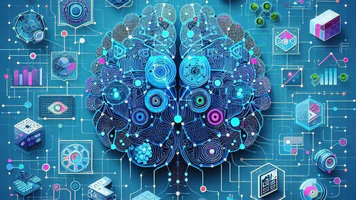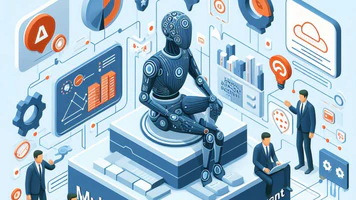
- By Justin Riddiough
- December 9, 2023
Imagine a future where your computer can not only understand the words you speak but also analyze the emotions etched on your face and the environment you’re in. This is the power of multimodal models, which combine insights from various modalities like text, images, audio, and video to paint a richer picture of the world. In this article, we’ll embark on a journey to discover the practical applications of these models and unlock their immense potential.
Image Captioning: Seeing Beyond the Pixelated Canvas
Have you ever marveled at how your phone effortlessly generates a caption for an image? Multimodal models play a crucial role in this process. By analyzing the visual features of the image and understanding the context, they can generate accurate and descriptive captions.
This technology has opened doors to exciting applications:
- Image retrieval: Imagine finding specific images from a vast database based on descriptive queries.
- Accessibility tools: Multimodal models can help visually impaired individuals navigate and understand the visual world around them, empowering them with greater independence.
- Creative writing inspiration: Spark new ideas and enhance storytelling with evocative image captions, unlocking new avenues for artistic expression.
“Seeing” through AI: Multimodal models are revolutionizing the way we interact with images, unlocking possibilities for accessibility, information retrieval, and artistic exploration.
However, the journey towards perfect image captioning is not without its challenges. Models might struggle with complex situations, such as sarcasm or cultural nuances. Additionally, crafting captions that are both informative and engaging requires ongoing research and development.
Video Understanding: Decoding the Moving Story
Multimodal models are revolutionizing video analysis by simultaneously processing audio and visual information. This enables us to understand the content and context of videos with unprecedented accuracy.
Imagine the possibilities:
- Automatic video summarization: Quickly grasp the key points of lectures or presentations, saving valuable time and effort.
- Real-time subtitles: Generate subtitles in real-time, making video content accessible to a wider audience, breaking down language barriers and fostering inclusivity.
- Surveillance video analysis: Detect suspicious activities and improve safety and security, keeping our communities safer.
“Hearing” beyond the audio: Multimodal video analysis unlocks possibilities for information extraction, accessibility, and security, enhancing our understanding of the world captured on video.
These are just a few examples of the transformative potential of video understanding. But like any journey, there are hurdles to overcome:
- Long-form video content analysis: Efficiently handling long videos requires further research and development to ensure accurate and timely analysis.
- Diverse video styles: Adapting to the vast diversity of video styles, from documentaries to artistic films, remains a challenge for multimodal models.
- Ethical considerations: Privacy concerns and potential biases in models demand careful attention and responsible implementation.
Speech-to-Text with Visual Context: Hearing Through New Eyes
Speech recognition technology has come a long way, but understanding speech in noisy environments or with heavy accents remains a challenge. Multimodal models offer a promising solution by incorporating visual information from the speaker’s lips and facial expressions, adding another layer of understanding to the spoken word.
Imagine the possibilities:
- Effortless transcription: Transcribe interviews and meetings with ease and accuracy, streamlining workflows and improving communication efficiency.
- Improved communication: Facilitate clear communication for individuals with speech impairments, fostering inclusivity and breaking down communication barriers.
- Personalized education: Create customized educational tools based on individual learning styles and pace, empowering personalized learning experiences.
“Hearing” through eyes: Multimodal speech-to-text models offer the potential for enhanced communication, accessibility, and personalized education, transforming how we interact with spoken language.
These are just a glimpse of the potential applications of speech-to-text with visual context. However, ensuring privacy and ethical considerations remains crucial:
- Data privacy: Protecting user privacy and ensuring responsible data collection and usage are paramount to ethical development and implementation.
- Bias mitigation: Addressing potential biases in models to ensure fair and equitable outcomes for all individuals.
- Real-world challenges: Adapting to diverse speech patterns and real-world environments requires ongoing research and development for robust and accurate results.
Embracing the Future of Multisensory Understanding
Multimodal models are rapidly evolving, opening doors to exciting opportunities in various fields. From understanding the nuances of visual content to interpreting spoken language with greater context, these models are revolutionizing the way we perceive and interact with the world around us.


